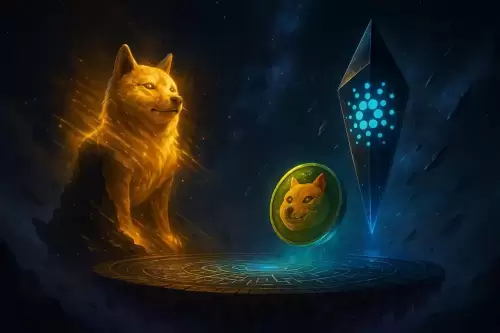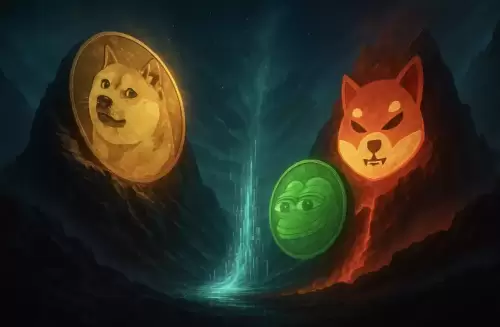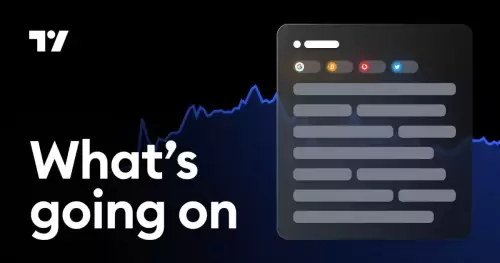 |
|
 |
|
 |
|
 |
|
 |
|
 |
|
 |
|
 |
|
 |
|
 |
|
 |
|
 |
|
 |
|
 |
|
 |
|
Cryptocurrency News Articles
Solana vs. Cardano: Ecosystem Growth and the Race for Blockchain Dominance
Jun 20, 2025 at 12:01 pm
Explore the dynamics of Solana and Cardano's ecosystem growth, dissecting their unique approaches and potential for future dominance in the blockchain arena.

Solana vs. Cardano: Ecosystem Growth and the Race for Blockchain Dominance
The blockchain arena is buzzing, and Solana and Cardano are front and center. Solana's been grabbing headlines with its vibrant ecosystem and lightning-fast transactions, while Cardano's banking on methodical development and a strong community. Let's dive into what's fueling their growth and where they might be headed.
Solana's Surge: Riding the Wave of Emerging Sectors
Solana's ecosystem is like a party everyone wants to be at, especially if you're into the latest trends. We're talking AI infrastructure and, yes, even meme coins. This focus on emerging sectors has been a major growth engine for Solana, attracting developers and investors alike. Its ability to handle high throughput with minimal fees makes it a go-to for DeFi and blockchain gaming.
Cardano's Calculated Approach: Developer Strength and Long-Term Vision
Cardano might not be chasing every shiny new thing, but it's building a solid foundation. It boasts impressive developer activity, signaling a commitment to long-term innovation. Cardano's focus on academic rigor and upcoming upgrades, like Ouroboros Leios, could position it as a serious contender. While it might lack the meme coin frenzy of Solana, Cardano is playing the long game.
Key Differences: Speed, Fees, and Programming Languages
Solana's got the speed advantage, no question. Its transaction speeds and low fees are a major draw. Plus, it uses Rust, a developer-friendly programming language, making it easier for people to jump in and build. Cardano, on the other hand, uses Plutus, a specialized language that, while powerful, has a steeper learning curve. This difference in accessibility impacts ecosystem growth.
Regulatory Hurdles: The SEC's Stance
Here's where things get a bit tricky. Both Solana and Cardano have faced scrutiny from the SEC, being classified as securities. This could throw a wrench into ETF applications and overall adoption. Navigating these regulatory waters will be crucial for both blockchains. Compliance and transparency are the names of the game.
BlockDAG: A Different Approach to Ecosystem Building
While Solana and Cardano battle it out, BlockDAG is quietly building a robust ecosystem through user engagement. Its X1 Miner App, with 2 million users, is more than just a promotional tool; it's a strategic play to distribute tokens, onboard participants, and foster a loyal community. This grassroots approach is paying off, with over $308 million raised in its presale.
My Take: It's Not Just About the Tech
Here's my two cents: it's not just about the fastest transactions or the coolest tech. It's about building a community and fostering real-world use cases. BlockDAG's success with the X1 Miner App shows that engaging users early on can create a self-sustaining ecosystem. Solana's vibrant ecosystem is proof of that. While Cardano has the tech and community, need to focus on the marketing.
The Road Ahead: Adaptation and Innovation
The blockchain world is a constantly evolving landscape. The success of Solana and Cardano depends on their ability to adapt to new technologies, regulatory changes, and market demands. Understanding their strengths and weaknesses will help developers and investors make informed decisions.
Final Thoughts: Buckle Up, It's Going to Be an Interesting Ride!
So, who will win the blockchain race? It's tough to say. Solana's got the momentum, Cardano's got the foundation, and BlockDAG's got the community. One thing's for sure: the future of blockchain is going to be wild. Grab your popcorn and enjoy the show!
Disclaimer:info@kdj.com
The information provided is not trading advice. kdj.com does not assume any responsibility for any investments made based on the information provided in this article. Cryptocurrencies are highly volatile and it is highly recommended that you invest with caution after thorough research!
If you believe that the content used on this website infringes your copyright, please contact us immediately (info@kdj.com) and we will delete it promptly.






























































